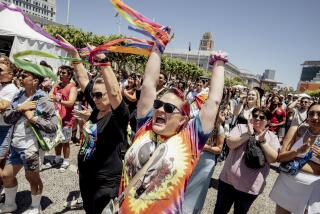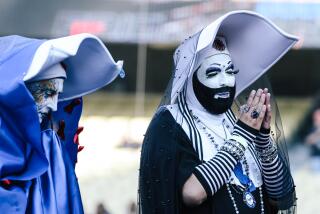L.A.’s top Pride celebrations say they’re better off apart. But did their breakup ‘split the baby’?
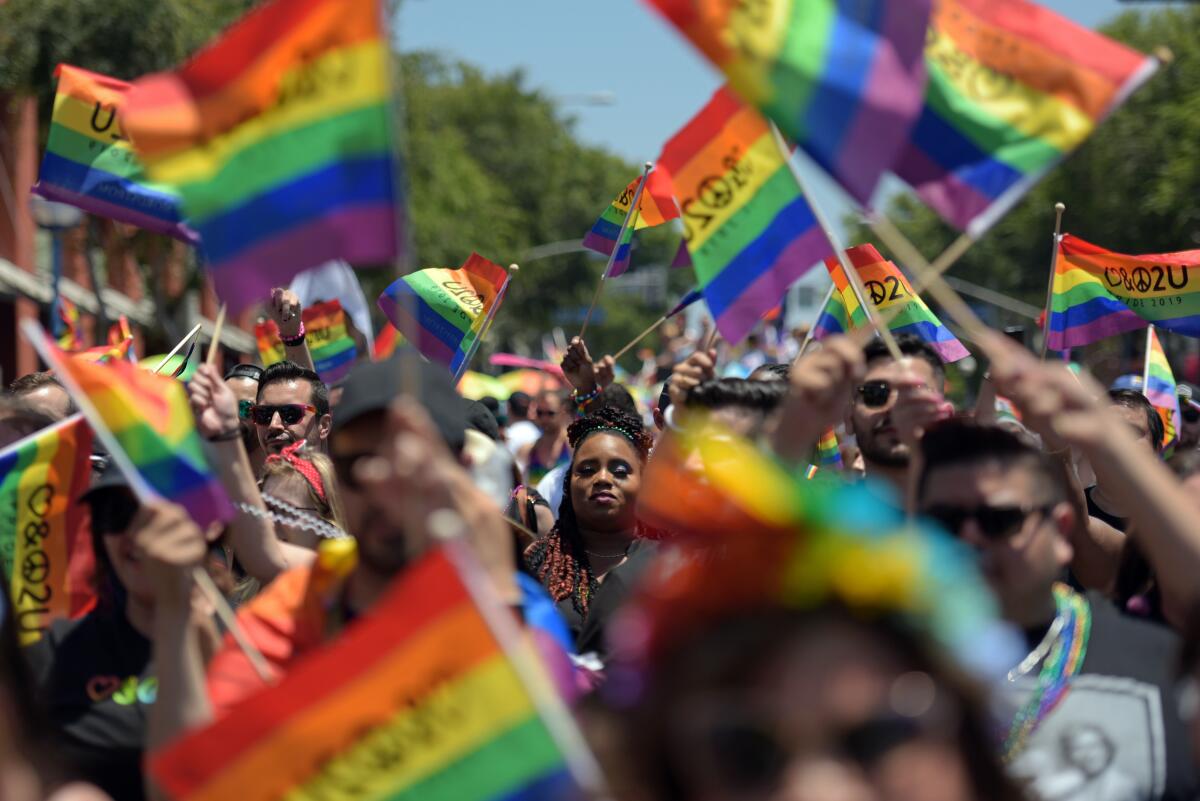
- Share via
Los Angeles’ original LGBTQ Pride parade and West Hollywood, the region’s iconic queer enclave, have spent the past two years in a bitter pandemic divorce.
Now both are back — all on their own and better than ever, thank you very much.
For the record:
10:32 a.m. June 12, 2022A previous version of this story misidentified the organization Craig Bowers works for. It is APLA Health.
“We’re really excited to be back in Hollywood,” said Gerald Garth, vice president for community programs and initiatives at LA Pride, “the original, official Pride parade of L.A.” and the first permitted Pride march in the world. “We’ve been seeing this as a return to our roots.”
L.A.’s first Pride parade was held in Hollywood in 1970. But Sunday will be the first time it has marched outside the city of West Hollywood in more than 40 years.
As for the organization’s erstwhile partner, West Hollywood was still glowing from its own Pride celebration — WeHo Pride — two miles away and seven days earlier.
“As far as I’m concerned there’s no competitiveness,” said West Hollywood Mayor Pro Tempore Sepi Shyne, who helped spearhead the city’s independent Pride effort. “We’ve completely shifted the way West Hollywood [does Pride] and actually made it our own for the first time.”
Many LGBTQ Angelenos reveled in the back-to-back Pride weekends after two years with no place to celebrate IRL.
“I think all of us were baffled at the beginning,” said Bamby Salcedo of the TransLatin@ Coalition, which has floats in both parades. “It’s great that there’s two festivals for us to be visible, show up and be proud — but it’s also a lot of work.”
For the former power couple — L.A. Pride and West Hollywood — it has proved an irresistible opportunity to upstage and outshine each other.
L.A. Pride is using its new citywide stage to play the greatest hits.
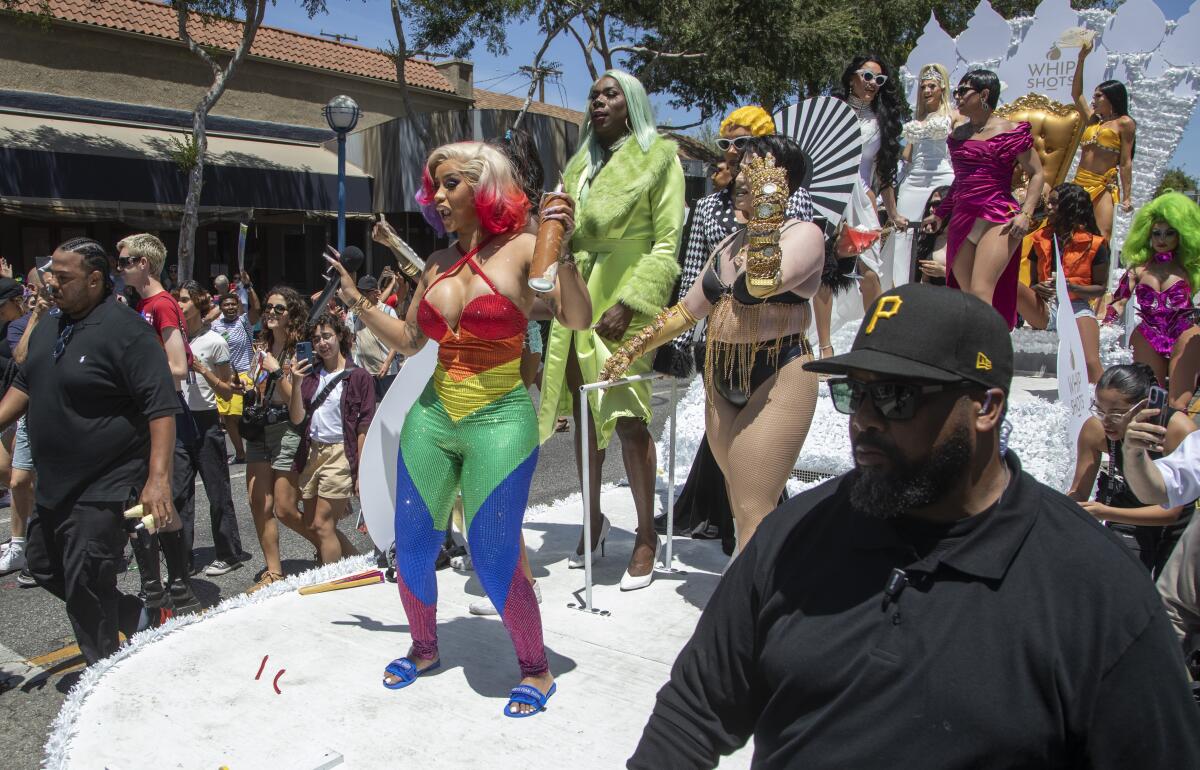
Eighties pop star Paula Abdul is the inaugural “icon grand marshal” for Sunday’s parade. Nineties diva Christina Aguilera headlined Saturday’s Pride in the Park concert at Los Angeles State Historic Park, where she sang her 2002 chart-topper “Beautiful.” And thousands are expected to attend the rowdy afterparty at Universal Studios.
“Pride does not belong to any one neighborhood,” Garth said. “It gives us more space to build experiences that represent the community.”
Meanwhile, West Hollywood snatched up the previously sleepy first weekend of June, curating a more boutique selection of Pride events to open the season.
“We’d gotten a lot of feedback that WeHo Pride was for white gay men only,” said Shyne, who joined the City Council after the separation. “We wanted to really elevate lesbian and queer women, the trans community, and the BIPOC community.”
The L-Project and Black Lesbians United co-hosted a Rainbow Family Picnic at Plummer Park. CherryBomb West Hollywood threw a drag king pool party at the Ziggy Hotel. And the genre- and gender- defying polymath Janelle Monáe played grand marshal in a parade featuring a surprise appearance by superstar Cardi B.
“They’re near each other, but they’re a million miles away in their focus,” West Hollywood City Councilmember John D’Amico said of the competing parades. “LA Pride is the holder of the history of the movement, and West Hollywood is the holder of the future.”
In fact, the city and the nonprofit say they’ve emerged from the split more forward-looking and more representative of L.A.’s multi-hyphenate alphabet crowd. Each looked askance at the progress of the other, reflecting a separation that was anything but amicable.
Tensions between LA Pride’s parent organization, Christopher Street West, and West Hollywood’s city fathers had simmered for years. There was a disastrous attempted rebrand in 2016 that critics dubbed “gay Coachella,” spats over accounting, and a widespread feeling among queer Angelenos of color that the organization and the city were unwelcoming and unrepresentative.
Those tensions boiled over in June 2020, amid online Pride events and citywide protests over the killing of George Floyd in Minnesota.
It was LA Pride’s golden anniversary, and the pair’s 41st year together. They announced their split in a pair of press releases less than a month later.
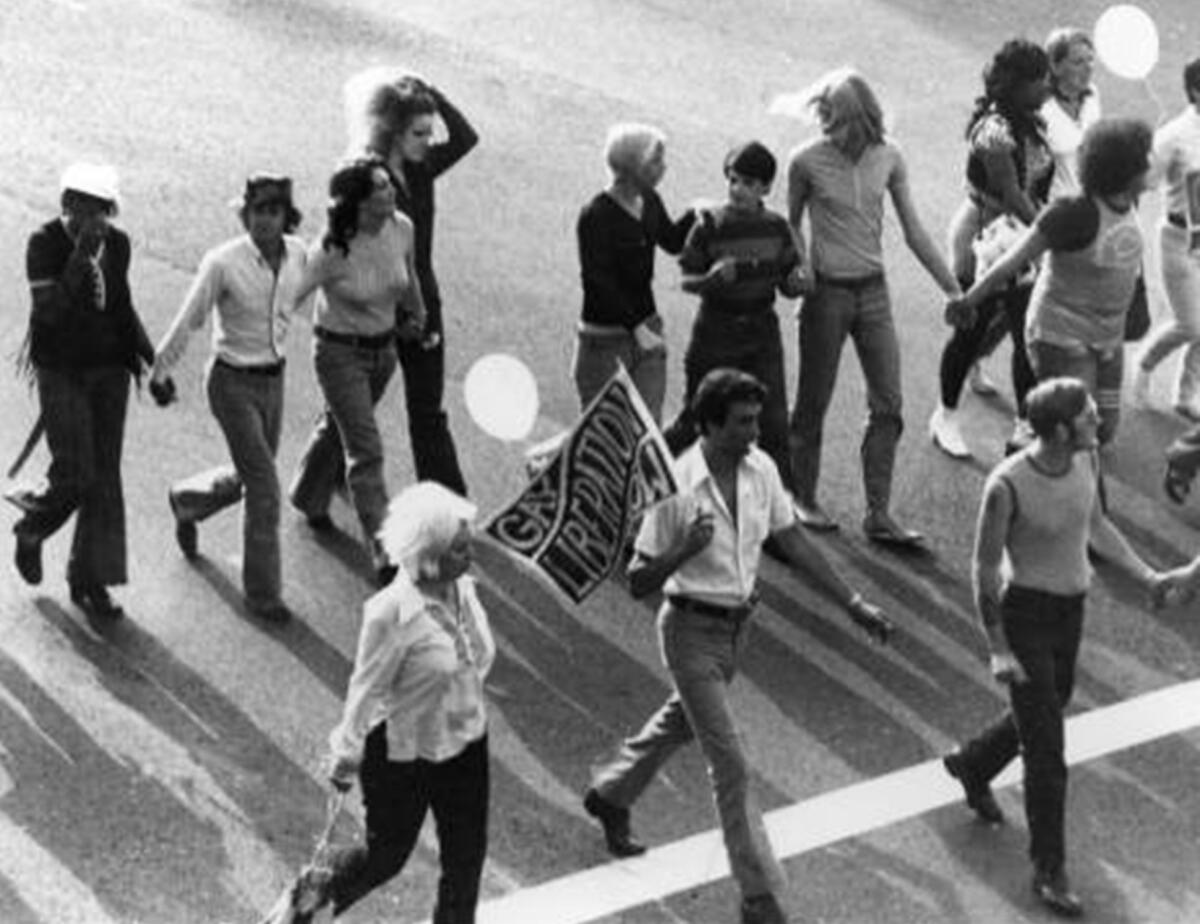
But not everyone agreed the two were better off alone.
“As a nonprofit, it’s really difficult for us to staff two weekends in a row of activities,” said Craig Bowers, chief marketing and external affairs officer of APLA Health, a healthcare organization. “They’ve kind of split the baby, and I don’t know if that’s great for the community.”
This year, the center chose to divide its efforts between the two, putting a float in the LA Pride parade and staffing a table at the West Hollywood festival. But next year, it might not be able to stretch its resources that far.
Many Angelenos don’t yet realize there are two Prides. Even the TransLatin@ Coalition learned of the split only in late April.
Tens of thousands of out-of-town visitors are even less likely to know. And while L.A. County has at least a dozen other Pride celebrations — including the august Long Beach Pride Parade, now in its 39th year — these exes march so close together that both overlap the 2017 route.
“Long Beach, that’s 26 miles away. But parades on weekends back to back less than two miles apart? That’s a head-scratcher,” Bowers said. “It kind of diffuses the energy.”
It also pulls one of the oldest and largest Pride celebrations in the world out of the center of gay life in Los Angeles.
“That was the only real major Pride parade that was in the neighborhood,” Bowers said. “If you go to New York, the parade meanders through half of Manhattan. If you go to San Francisco, it’s not in the Castro, it’s down Market Street in the Financial District. That’s what made L.A. unique. The parade ended and you could go to the bars, you could go to the festivals. We don’t have that anymore.”
But others said it was worth giving up some of what made LA Pride in West Hollywood special in order for future events to be more inclusive.
“Because we’re an all volunteer board, we can only do maybe one or two events big like that a year,” said Chris Baldwin of the L-Project. “But there’s no sadness [at missing LA Pride].”
Instead, she hopes to see the two carve out different paths.
“What happened with LA Pride needed to happen, and it’s OK,” Baldwin said. “There’s enough room for everybody to do their own Pride.”
More to Read
Sign up for Essential California
The most important California stories and recommendations in your inbox every morning.
You may occasionally receive promotional content from the Los Angeles Times.


